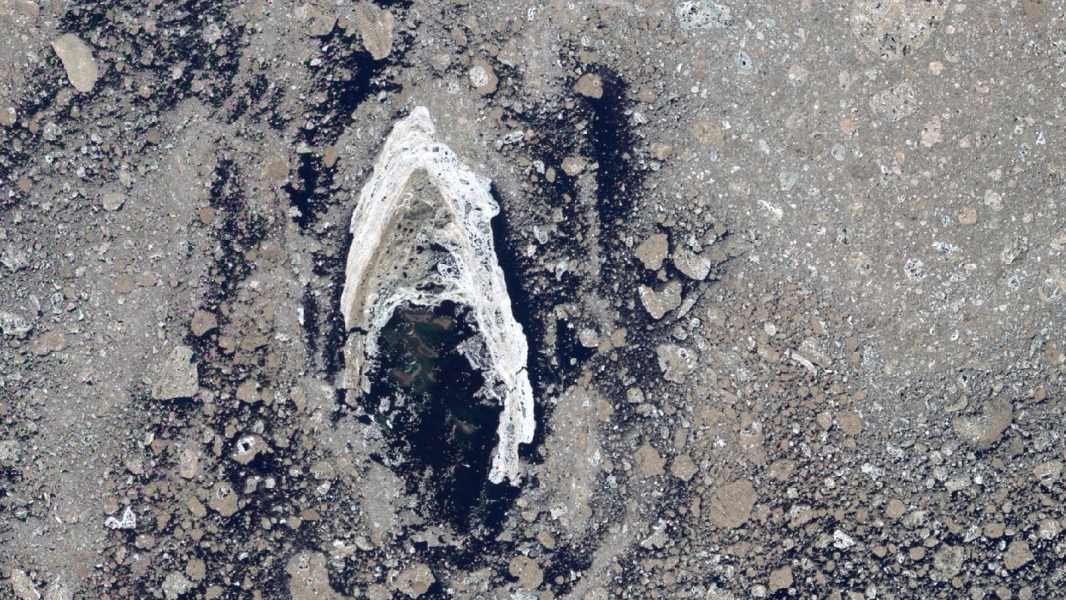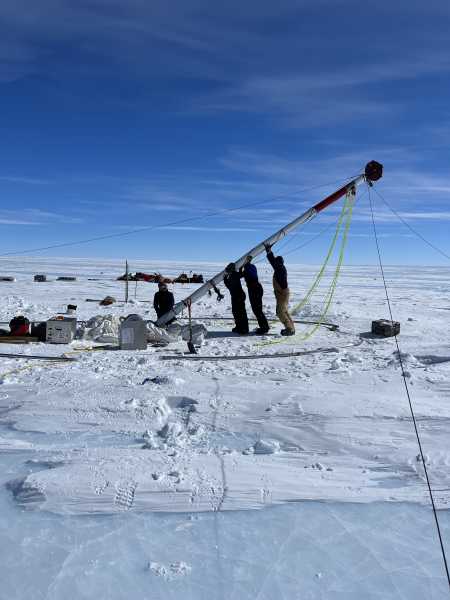
This bright white patch of snowy sea ice was captured by NASA's Earth Observing-1 satellite in 2012. It bears a striking resemblance to the Starfleet insignia worn by characters in the Star Trek franchise. (Image credit: NASA/EO-1)
This 2012 satellite image shows an unusual snowy formation nestled amid a sea of dirty, cracking sea ice in northern Canada. The curved white feature is reminiscent of the rounded, arrowhead-like insignia that were affixed to the uniforms of fictional Starfleet officers like James T. Kirk and Jean-Luc Picard in the iconic Star Trek franchise.
The satellite spotted an unusual feature in Foxe Basin, a shallow 316,000-square-mile (819,000-square-kilometer) body of water north of Hudson Bay. The structure surrounds a group of tiny rocky islands known as the Manning Islands.
The ice arrowhead “likely formed because snow got stuck in the rough, ridged ice that formed as it moved toward the Manning Islands,” Nathan Kurtz, chief scientist at the Cryospheric Sciences Laboratory at NASA's Goddard Space Flight Center, said in 2014. The 1.5-mile-wide (2.5-kilometer-wide) patch appeared to be multiyear sea ice, meaning it was made up of ice that was several years old, he added.
During the summer when this photo was taken, Arctic sea ice begins to melt and break up into thousands of smaller fragments that eventually break off and disappear entirely. In this case, most of these fragments were a dirty brown color, which is attributed to contamination from sediments stirred up from the sea floor, according to Earth Observatory.

Actor William Shatner wears the iconic Starfleet badge while portraying Captain James T. Kirk in the first season of the original Star Trek television series in 1966.
Some of the larger ice patches in the image are dotted with small blue dots. These are melt ponds, which are small pools of water that form on the surface of the ice as it melts.
The waters surrounding these sea ice fragments are rich in phytoplankton,
Sourse: www.livescience.com





